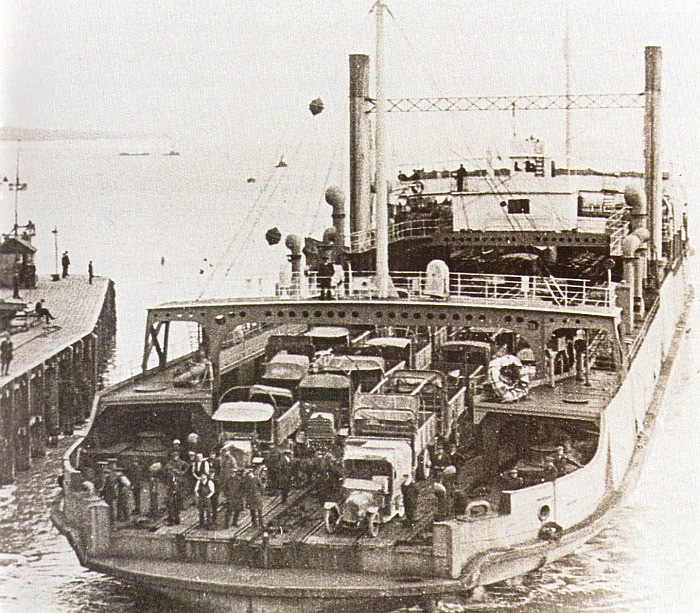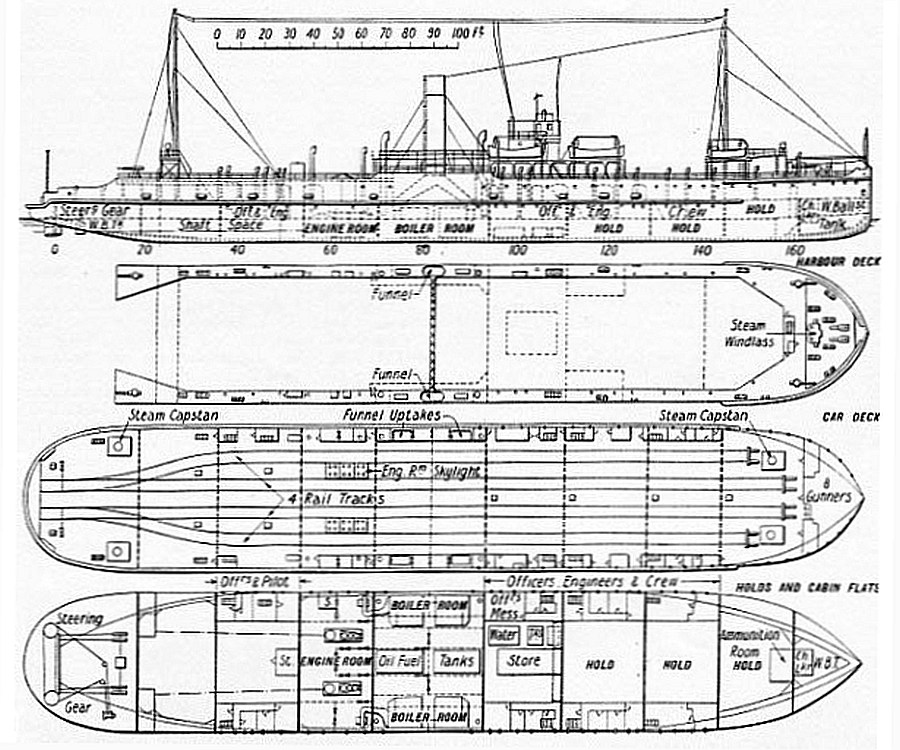| Name: | T F 1 (this was a name not a pennant number) |
| Type: | Train Ferry |
| Launched: | 03/08/1917 |
| Completed: | 11/1917 |
| Builder: | Armstrong, Whitworth & Co Ltd |
| Yard: | Low Walker |
| Yard Number: | 921 |
| Dimensions: | 2683grt, 1085nrt, 350.6 x 58.7 x 15.5ft |
| Engines: | 2 x T3cyl (18, 29 & 47 x 27ins), 403nhp |
| Engines by: | Wallsend Slipway & Engineering Co Ltd, Wallsend |
| Propulsion: | 2 x Screws, 12.0knots |
| Construction: | Steel |
| Reg Number: | n/a; (1921: 145233) |
| History: | |
| 11/1917 | War Office (British Army) |
| 06/06/1921 | Port of Queenborough Development Co Ltd, London; renamed TRAIN FERRY NO 1 |
| 1923 | Great Eastern Train Ferries Ltd, London |
| 1934 | London & North-Eastern Railway, London |
| 09/1940 | British Royal Navy; renamed IRIS |
| 09/1942 | Renamed PRINCESS IRIS |
| 06/1946 | London & North-Eastern Railway, London; renamed ESSEX FERRY |
| 01/01/1948 | British Transport Commission, Harwich |
| 1956 | Renamed ESSEX FERRY II |
| 26/02/1957 | Broken up |
| Comments: | Designed to help alleviate the bottlenecks at the Channel ports during WW1. |
| Conventional ships were loaded with all sorts of heavy and bulky war materiel and then unloaded after a very short journey by sea. Roll-on roll-off train ferries were seen as a way round this problem. They were designed to be used from the new Military Port of Richborough in Kent but started service between Southampton and Dieppe as Richborough was not complete. | |
| The War Office ordered three vessels despite the objections of the Admiralty about being a waste of time and effort and that they would not provide the service required. All the objections were disproved in practice and the first vessel entered service 11 months after Cabinet approval had been given for the project. | |
| They had four sets of rails along the train deck & used a link span to load when in harbour. The greatest vindication for the design was the carriage of two siege guns each weighing 189 tons that were rolled onto the normal cargo deck. | |
| Armed with 5 x 1 x 20mm guns | |
| All three were laid up after 1922 | |
| 1923: Used on the Harwich and Zeebrugge (and briefly to Calais) service | |
| 1941: Converted to a Landing Craft Carrier, the twin funnels were incorporated into a single stack. Capable of carrying 14 landing craft in the train deck (launched via a stern chute) and 4 more by crane on the upper deck. She spent most of her time ferrying landing craft to southern ports. After the Normandy invasion, she ferried damaged craft back to the UK. In August 1944 she was re-converted to carry locomotives from Southampton to Cherbourg and Dieppe, but by 1945 she was again ferrying landing craft. | |
| 1946: Returned to the Harwich and Zeebrugge service | |
| 26/02/1957: Broken up by TW Ward at Grays, Essex |

Above: One of the 3 ferries in 1919 showing that they could be used for road transport as well as trains

Above: T F 1 in position on the Richborough link span

Above photo as TRAIN FERRY NO 1 at Harwich between the Wars

Above photo as HMS PRINCESS IRIS with single funnel is courtesy of Photoship

Above photo as HMS PRINCESS IRIS is courtesy of Photoship

Above photo as HMS PRINCESS IRIS is copyright of the Imperial War Museum

Above photo as ESSEX FERRY at Palmers' for post war modifications. Photo is courtesy of Kevin Blair

Above photo as ESSEX FERRY II is courtesy of Richard Cox

Above image is courtesy of Photoship